Cybersecurity is not just a concern; it’s an imperative with the evolving cyber threats in the IT business infrastructure. As technology advances, so do the techniques employed by cybercriminals. To combat these threats effectively, IT leaders, including Chief Information Officers (CIOs), must continually educate themselves on cybersecurity developments and strategies. This is where the power of books comes into play.
Cybersecurity books offer a treasure trove of knowledge and insights, ranging from the fundamentals of risk assessment to practical malware analysis and everything in between. For CIOs and IT leaders, staying abreast of these topics is not just beneficial—it’s essential to safeguard their organization’s digital assets and maintain a competitive edge in the industry.
These books cover strategic IT leadership, operational efficiency, security measures, network protection, hands-on defense tactics, policy frameworks, and adaptive security strategies. They provide practical guidance and knowledge to navigate today’s technology landscape effectively. The article will cover essential cybersecurity topics and recommended books for CIOs and IT leaders to enhance their knowledge and skills.
#1 Wolf in CIO’s Clothing
Author – Tina Nunno
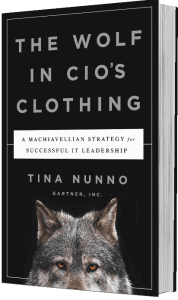 Wolf in CIO’s Clothing by Tina Nunno delves into the complex realm of IT leadership, exploring the dichotomy between being liked and being respected, discerning risk from recklessness, and knowing when to stand firm or yield. Drawing inspiration from Machiavelli’s philosophy, Nunno categorizes CIOs into seven animal archetypes, with the wolf symbolizing adaptable and assertive leadership traits. Through insightful case studies, Nunno provides practical strategies for CIOs and IT leaders to navigate power dynamics and succeed in their roles.
Wolf in CIO’s Clothing by Tina Nunno delves into the complex realm of IT leadership, exploring the dichotomy between being liked and being respected, discerning risk from recklessness, and knowing when to stand firm or yield. Drawing inspiration from Machiavelli’s philosophy, Nunno categorizes CIOs into seven animal archetypes, with the wolf symbolizing adaptable and assertive leadership traits. Through insightful case studies, Nunno provides practical strategies for CIOs and IT leaders to navigate power dynamics and succeed in their roles.
About the author: Tina Nunno, a Vice President and Gartner Fellow, specializes in CIO-related management issues, offering expertise in board relations, executive communication strategies, change leadership, and enterprise governance strategies. With a focus on managing IT political complexities and fostering collaboration across business units, Nunno is a sought-after keynote speaker at global conferences and has been instrumental in establishing Gartner’s Women’s CIO Community
#2 The CIO Paradox: Battling the Contradictions of IT Leadership
Author – Martha Heller
 The CIO Paradox: Battling the Contradictions of IT Leadership by Martha Heller offers a comprehensive exploration of the conflicting challenges CIOs face in modern business environments. Through rich examples and insightful recommendations, Heller addresses key paradoxes, such as the tension between strategic vision and operational demands. From her extensive experience and interviews with industry leaders, Heller provides practical guidance for CIOs striving to succeed.
The CIO Paradox: Battling the Contradictions of IT Leadership by Martha Heller offers a comprehensive exploration of the conflicting challenges CIOs face in modern business environments. Through rich examples and insightful recommendations, Heller addresses key paradoxes, such as the tension between strategic vision and operational demands. From her extensive experience and interviews with industry leaders, Heller provides practical guidance for CIOs striving to succeed.
#3 Accelerate: The Science of Lean Software and DevOps: Building and Scaling High Performing Technology Organizations
Authors – Gene Kim, Jez Humble, and Nicole Forsgren
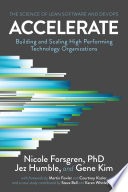 In the book, the authors, Dr. Nicole Forsgren, Jez Humble, and Gene Kim, challenge the notion that software delivery teams’ performance lacks competitive advantage. They present findings from four years of research, including data from the State of DevOps reports, to measure software delivery performance and identify driving factors. This book offers insights into measuring team performance and investing in capabilities to enhance productivity, making it an essential reading for management at all levels.
In the book, the authors, Dr. Nicole Forsgren, Jez Humble, and Gene Kim, challenge the notion that software delivery teams’ performance lacks competitive advantage. They present findings from four years of research, including data from the State of DevOps reports, to measure software delivery performance and identify driving factors. This book offers insights into measuring team performance and investing in capabilities to enhance productivity, making it an essential reading for management at all levels.
About the authors: Dr. Nicole Forsgren, now at Google Cloud, led the largest DevOps studies and is renowned for her work in measuring technology processes. Jez Humble, co-author of various influential books, focuses on building high-performing teams at DevOps Research and Assessment, LLC. Gene Kim, a respected CTO and author, is known for his contributions to the DevOps movement and IT Revolution.
#4 Mastering Malware Analysis Publisher
Authors – Alexey Kleymenov, Amr Thabet
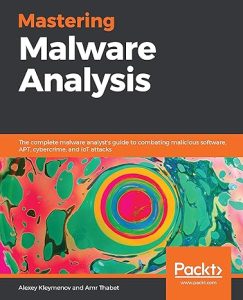 Mastering Malware Analysis,” published by Packt Publishing, is a comprehensive guide to navigating the complex landscape of malware threats. Addressing the increasing risk posed by malicious code, the book offers practical insights into effectively analyzing and preventing malware incidents. Covering dynamic malware analysis, memory forensics, decryption, and more, this resource equips IT professionals with the knowledge and skills needed to develop innovative solutions and safeguard against cyber threats.
Mastering Malware Analysis,” published by Packt Publishing, is a comprehensive guide to navigating the complex landscape of malware threats. Addressing the increasing risk posed by malicious code, the book offers practical insights into effectively analyzing and preventing malware incidents. Covering dynamic malware analysis, memory forensics, decryption, and more, this resource equips IT professionals with the knowledge and skills needed to develop innovative solutions and safeguard against cyber threats.
Both authors are seasoned experts in information security; this book draws on their extensive experience and expertise. Alexey Kleymenov, with over a decade of practical experience and a strong background in reverse engineering, brings valuable insights into malware analysis and threat detection. Amr Thabet, known for his work as a former malware researcher at Symantec and founder of MalTrak, offers invaluable expertise and practical guidance, making “Mastering Malware Analysis” an essential resource for IT security professionals and malware researchers.
About the authors: Alexey Kleymenov, with over 10 years of practical experience in the information security industry, specializes in reverse engineering, process automation, and research. He has contributed to various e-crime investigations and developed applications to detect modern threats in the IoT domain. Alexey holds the CISSP certification and is a member of (ISC)² organization.
Amr Thabet, a former malware researcher at Symantec, is the founder of MalTrak and a prominent speaker at security conferences worldwide. He is known for his expertise in malware analysis and his efforts to mentor aspiring enthusiasts. Amr’s work has been recognized for its contribution to cybersecurity, particularly in detecting threats like Stuxnet.
#5 Network Security: Private Communication in a Public World
Author – Radia Perlman, Charlie Kaufman, Mike Speciner
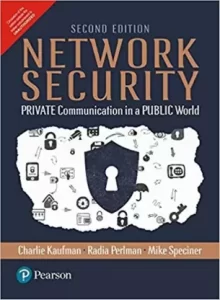 Network Security: Private Communication in a Public World” by Charlie Kaufman is the quintessential resource for understanding network and Internet security in today’s rapidly evolving landscape. In its second edition, the book offers comprehensive coverage of the latest threats, techniques, and technologies in information security. From foundational concepts like authorization and cryptography to advanced topics such as authentication protocols and Internet security standards like IPSec and SSL, the authors provide accessible explanations for every aspect of network security. With practical insights into web security issues and overviews of security in various environments, this book is essential for anyone seeking to fortify their understanding of network security in the digital age.
Network Security: Private Communication in a Public World” by Charlie Kaufman is the quintessential resource for understanding network and Internet security in today’s rapidly evolving landscape. In its second edition, the book offers comprehensive coverage of the latest threats, techniques, and technologies in information security. From foundational concepts like authorization and cryptography to advanced topics such as authentication protocols and Internet security standards like IPSec and SSL, the authors provide accessible explanations for every aspect of network security. With practical insights into web security issues and overviews of security in various environments, this book is essential for anyone seeking to fortify their understanding of network security in the digital age.
About the authors: Mike Speciner involvement may include technical editing to ensure the book meets the needs of both technical and non-technical readers.
Radia Perlman, renowned for inventing the Spanning Tree Protocol (STP), has revolutionized network communication by preventing loops and facilitating efficient data routing. Her expertise in network routing and bridging protocols has profoundly influenced the internet’s capacity to handle vast amounts of data, contributing significantly to secure and efficient communication networks today.
Charlie Kaufman, a celebrated screenwriter renowned for his thought-provoking narratives, brings a unique perspective to “Network Security.” While his direct involvement in the book’s content may be limited, his exploration of themes such as identity and manipulation offers valuable insights into the complexities of securing information in the digital age.
#6 The Web Application Hacker’s Handbook: Finding and Exploiting Security Flaws
Authors – Dafydd Stuttard and Marcus Pinto
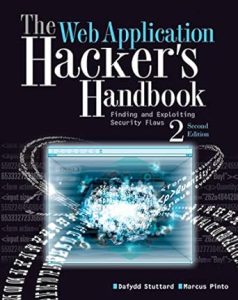 “The Web Application Hacker’s Handbook: Finding and Exploiting Security Flaws” by Dafydd Stuttard and Marcus Pinto is a comprehensive guide to understanding and defending against security vulnerabilities in web applications. This updated edition covers the latest techniques for attacking and defending web applications, including new technologies and attack methods that have emerged since the previous edition. Readers will learn how to overcome new defense mechanisms and explore topics such as remoting frameworks, HTML5, cross-domain integration techniques, and more. With practical exercises and a companion website for hands-on learning, this book is an invaluable resource for anyone involved in web application security.
“The Web Application Hacker’s Handbook: Finding and Exploiting Security Flaws” by Dafydd Stuttard and Marcus Pinto is a comprehensive guide to understanding and defending against security vulnerabilities in web applications. This updated edition covers the latest techniques for attacking and defending web applications, including new technologies and attack methods that have emerged since the previous edition. Readers will learn how to overcome new defense mechanisms and explore topics such as remoting frameworks, HTML5, cross-domain integration techniques, and more. With practical exercises and a companion website for hands-on learning, this book is an invaluable resource for anyone involved in web application security.
About the authors: Dafydd Stuttard is an esteemed expert in web application security, known for his contributions to the field and his creation of the Burp Suite of tools. He has provided training on web application security at conferences worldwide. Marcus Pinto specializes in web application security, offering consultancy services to the financial and e-commerce sectors. He has played a significant role in establishing the UK’s web application assessment standard.
#7 Confessions of a Successful CIO: How the Best CIOs Tackle Their Toughest Business Challenges
Authors – Dan Roberts and Brian Watson
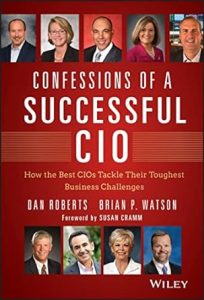 Confessions of a Successful CIO: How the Best CIOs Tackle Their Toughest Business Challenges” offers invaluable insights into the evolving role of Chief Information Officers (CIOs) in today’s technology-driven business landscape. Authored by Dan Roberts and Brian Watson, with a foreword by Susan Cramm, the book explores the transformation of CIOs from mere technology managers to strategic business partners. Through detailed case studies and anecdotes from renowned IT leaders, readers understand how top CIOs navigate complex business challenges, make critical decisions, and drive innovation to create tangible value for their organizations.
Confessions of a Successful CIO: How the Best CIOs Tackle Their Toughest Business Challenges” offers invaluable insights into the evolving role of Chief Information Officers (CIOs) in today’s technology-driven business landscape. Authored by Dan Roberts and Brian Watson, with a foreword by Susan Cramm, the book explores the transformation of CIOs from mere technology managers to strategic business partners. Through detailed case studies and anecdotes from renowned IT leaders, readers understand how top CIOs navigate complex business challenges, make critical decisions, and drive innovation to create tangible value for their organizations.
Readers will:
- Gain perspectives from acclaimed CIOs on their toughest business decisions and their impact on leadership styles
- Learn how successful CIOs anticipate and respond to changes in their business environment
- Explore strategies for managing people, crises, and balancing risks and rewards in strategic IT initiatives
- Use real-life case studies to analyze and learn from the experiences of top CIOs, helping present and future IT leaders develop their successful strategies.
About the authors: Dan Roberts is an accomplished author known for his IT leadership and innovation books. Brian Watson, Vice President of Enterprise Innovation at Traction Technology, brings extensive experience collaborating with CIOs and senior technology executives to shape innovation and emerging technology strategies. Together, they offer readers a comprehensive playbook for succeeding in the dynamic world of IT leadership.
#8 Information Security Management Principles
Authors – David Alexander, Amanda Finch, Andy Taylor, and David Sutton
 In today’s technology-driven environment, the demand for information delivery constantly increases, requiring a delicate balance between security and availability. “Information Security Management Principles” offers a pragmatic guide to information assurance, catering to business professionals and technical experts.
In today’s technology-driven environment, the demand for information delivery constantly increases, requiring a delicate balance between security and availability. “Information Security Management Principles” offers a pragmatic guide to information assurance, catering to business professionals and technical experts.
Written in an accessible manner, the book provides practical guidance and actionable steps to enhance information security in workplaces and homes. Whether you’re new to the subject or an experienced practitioner, this primer covers the fundamentals of information security, organizational security practices, and effective recovery strategies in case of breaches.
This third edition has been updated to address the latest threats, vulnerabilities, and standards in the IT security landscape. It also aligns with updates to the BCS Certification in Information Security Management Principles, making it an essential resource for professionals at all levels and those aspiring to enter the field of information security.
#9 Zero Trust Networks: Building Secure Systems in Untrusted Networks
Authors – Evan Gilman and Doug Barth
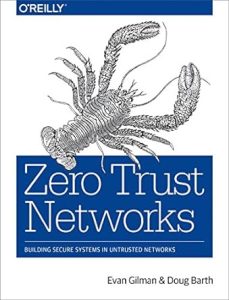 Zero Trust Networks: Building Secure Systems in Untrusted Networks” introduces the zero trust model, treating all hosts as potentially internet-facing and viewing the entire network as compromised. Authors Evan Gilman and Doug Barth demonstrate how this approach strengthens authentication, authorization, and encryption while providing compartmentalized access and operational agility. The book covers the architecture of a zero-trust network and explains how to implement it using available technology. Readers will understand how the zero trust model integrates security within system operations rather than layering it on top and explore fundamental concepts such as network agents and trust engines.
Zero Trust Networks: Building Secure Systems in Untrusted Networks” introduces the zero trust model, treating all hosts as potentially internet-facing and viewing the entire network as compromised. Authors Evan Gilman and Doug Barth demonstrate how this approach strengthens authentication, authorization, and encryption while providing compartmentalized access and operational agility. The book covers the architecture of a zero-trust network and explains how to implement it using available technology. Readers will understand how the zero trust model integrates security within system operations rather than layering it on top and explore fundamental concepts such as network agents and trust engines.
About the authors: Evan Gilman, an Operations Engineer with a background in computer networks, specializes in designing systems for hostile environments. He contributes to open-source projects and is dedicated to creating systems that align with network environments. Doug Barth, a software engineer, has experience working on systems of various sizes in companies like Orbitz and PagerDuty. He shares his knowledge through speaking engagements and has expertise in monitoring systems, mesh networks, and failure injection practices.
#10 Hacking The Art of Exploitation
Author – Jon Erickson
 “Hacking: The Art of Exploitation” by Jon Erickson delves into the art of creative problem-solving through hacking techniques. Unlike other books, Erickson demonstrates existing exploits and explains the underlying mechanisms behind hacking methods. The book introduces C programming fundamentals from a hacker’s perspective, accompanied by a LiveCD offering a complete Linux programming and debugging environment. Readers learn to debug code, overflow buffers, hijack network communications, bypass security measures, and more. Erickson’s expertise in computer science and experience as a cryptologist and security specialist enriches the book, making it an invaluable resource for aspiring hackers and security enthusiasts alike.
“Hacking: The Art of Exploitation” by Jon Erickson delves into the art of creative problem-solving through hacking techniques. Unlike other books, Erickson demonstrates existing exploits and explains the underlying mechanisms behind hacking methods. The book introduces C programming fundamentals from a hacker’s perspective, accompanied by a LiveCD offering a complete Linux programming and debugging environment. Readers learn to debug code, overflow buffers, hijack network communications, bypass security measures, and more. Erickson’s expertise in computer science and experience as a cryptologist and security specialist enriches the book, making it an invaluable resource for aspiring hackers and security enthusiasts alike.
About the author: Jon Erickson brings a wealth of expertise to computer science and cybersecurity. With a formal education in computer science, Erickson is well-equipped to tackle the complexities of hacking and security. He shares his extensive knowledge by speaking frequently at computer security conferences worldwide, where he imparts valuable insights and strategies to fellow professionals. Based in Northern California, Erickson is a cryptologist and security specialist, contributing significantly to advancing cybersecurity practices. His dedication to educating and empowering others in cybersecurity makes him a respected figure in the industry.
Overall
In conclusion, knowledge plays a crucial role in defending against cyber threats. Each book discussed in this guide provides distinct viewpoints and valuable understandings across various aspects of cybersecurity. However, acquiring knowledge alone is insufficient; it must be applied effectively.
FAQs
- Why is it important for CIOs to read cybersecurity books?
Cybersecurity books provide CIOs with valuable insights into the evolving cyber threat landscape, equipping them with knowledge to make informed decisions and develop effective strategies for protecting their organization’s digital assets. - What role do cybersecurity books play in enhancing CIOs’ understanding of technology risks? Cybersecurity books offer in-depth analysis of technology risks, including emerging threats and vulnerabilities. By reading these books, CIOs gain a deeper understanding of potential risks to their organization’s IT infrastructure, enabling them to implement proactive measures to mitigate them.
- How do cybersecurity books help CIOs stay abreast of the latest cybersecurity developments?
It provides CIOs with up-to-date information on cybersecurity trends, techniques, and technologies. By reading these books, CIOs can stay informed about emerging threats and best practices in cybersecurity, allowing them to adapt their security strategies accordingly. - What insights do cybersecurity books offer CIOs regarding industry-specific cybersecurity challenges? Cybersecurity books often include case studies and real-world examples illustrating industry-specific cybersecurity challenges. By reading these books, CIOs can gain valuable insights into their industry’s unique cybersecurity risks and regulatory requirements, helping them effectively tailor their security strategies to address these challenges.
[To share your insights with us as part of editorial or sponsored content, please write to sghosh@martechseries.com]


